MIG welding is a widely used welding process that involves the use of an electric arc and a consumable wire electrode to join two or more metal parts together.
Argon shielding gas is often used in MIG welding to protect the molten metal from the surrounding air and prevent oxidation, resulting in a cleaner and stronger weld.
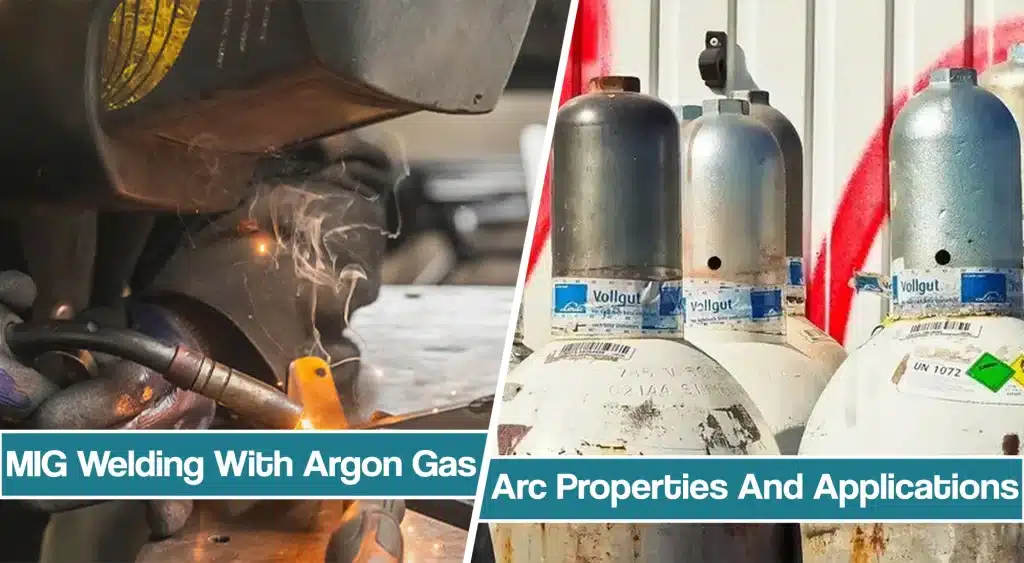
But what makes argon such an effective shielding gas, and how does it impact the welding process? In this article, we’ll explore the science behind MIG welding with argon gas, the benefits and drawbacks of using this gas, and some tips for achieving the best results.
Why is argon used as shielding gas in MIG welding?
Argon is commonly used as a shielding gas in MIG welding because of the unique properties that make it highly effective at preventing oxidation and improving weld quality.
When an electric arc is created between the metal part and the wire electrode, the intense heat generated can cause the molten metal weld pool to react with the surrounding air, which can lead to the formation of oxides and other impurities. This can weaken the weld and make it more susceptible to cracking and corrosion.
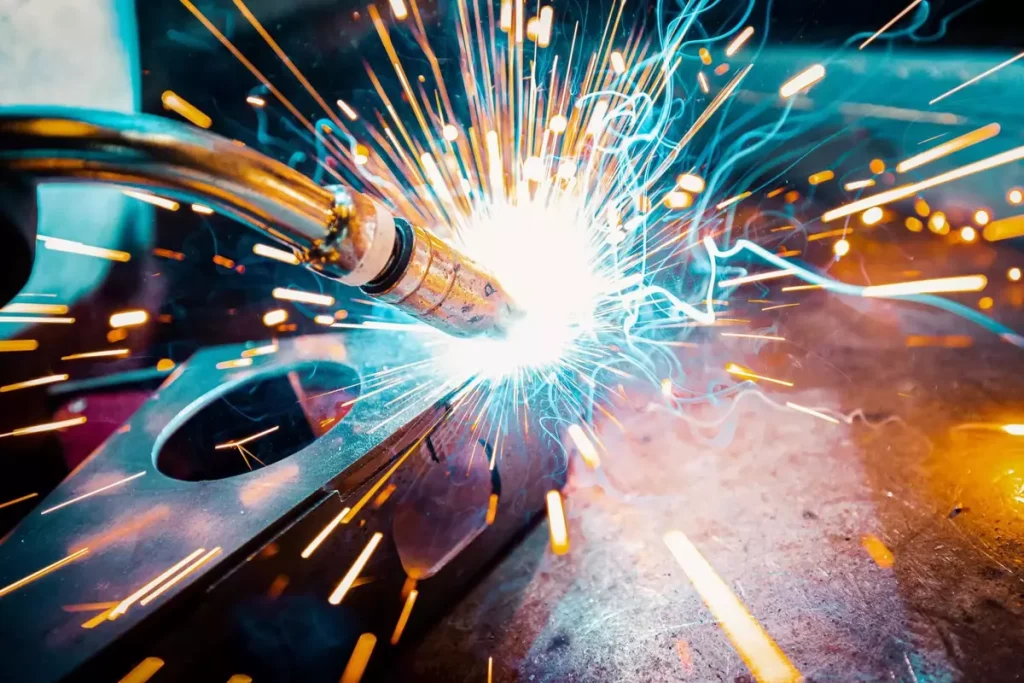
Argon is an inert gas, which means it doesn’t react with other substances, making it an excellent choice for shielding the weld from the surrounding air. When argon is used as a shielding gas in Metal Inert Gas welding, it forms a protective envelope around the weld, which prevents the molten metal from coming into contact with the air and getting oxidized.
Argon also has a higher density than air, which means it forms a more stable and uniform shield around the weld. This is important because it helps to reduce the amount of spatter that can occur during the welding process, which can affect the quality of the weld and make it more difficult to clean up.
Arc Characteristics Of Argon As Shielding Gas
Argon produces several desirable arc characteristics during welding that contribute to its effectiveness as a MIG welding gas. These characteristics include
- stability,
- smoothness,
- minimal spatter.
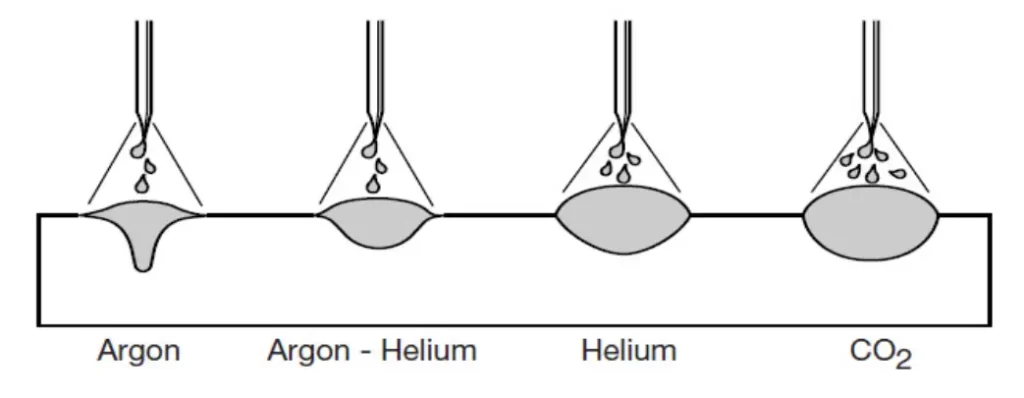
Stability refers to the consistency of the arc during welding, and argon gas helps to maintain a stable arc by providing a uniform and consistent shielding environment around the weld. This allows the welder to maintain control over the welding process and produce high-quality welds with minimal defects.
Smoothness refers to the appearance of the weld bead, and argon gas helps to produce a smooth and even bead by reducing the amount of spatter that occurs during welding. Spatter is the small droplets of molten metal that can fly off the weld during welding, and it can cause surface irregularities and weaken the strength of the weld. Argon gas reduces spatter by stabilizing the arc and preventing it from getting too hot, which in turn reduces the amount of molten filler metal that splatters.
Argon gas also helps to produce a narrow and focused arc during welding, which is especially useful when welding thin metals or when precise control is needed. This focused arc helps to concentrate the heat in a small area, which reduces the risk of burning through the metal or causing distortion.
MIG Welding With Pure (100%) Argon
MIG welding with 100% argon gas can produce a smooth and consistent weld with low spatter and reduced distortion, but it may have lower penetration and can be more expensive than using a mixture of gases. It is important to consider the specific requirements of the welding project when choosing a shielding gas.
MIG welds made with 100% argon gas tend to have lower penetration compared to those made with a mixture of argon and other gases. This can be an advantage when welding thinner materials or when a shallower weld is desired.
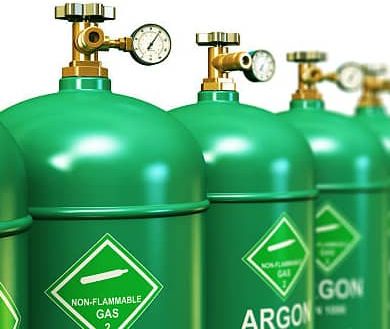
Can You MIG Weld Mild Steel With 100% Argon?
While it is possible to MIG weld steel with pure argon shielding, it may not be the most optimal choice, and there may be some potential issues to consider.
One of the primary issues with using pure argon as a shielding gas for MIG welding steel is that it can result in a shallow weld with low penetration. This is because pure argon has a lower ionization potential than other gases such as carbon dioxide, which can result in a less energetic arc that does not penetrate as deeply into the base metal. As a result, the weld may not have the necessary strength and may be more susceptible to cracking.
Another issue with using pure argon is that it can result in a higher rate of weld spatter, which can lead to a messier weld and require more cleanup afterward. This can be a particular issue when welding thicker materials, where the spatter can be more significant.
However, there are some potential benefits to using pure argon shielding gas when MIG welding steel. For example, it can result in a smoother and more consistent weld bead, with fewer surface imperfections. Additionally, it can be a useful choice when welding thin materials, where a shallow weld with low penetration is desired.
What Are The Alternatives And Better Choices For Steel?
When MIG welding steel, there are several alternative shielding gases to consider that may be better suited than pure argon, depending on the specific requirements of the welding project. Some of the most common alternatives include:
- Argon-CO2 mixture: Argon-CO2 mixtures are a popular choice for MIG welding steel, as they provide a good balance of ionization potential and thermal conductivity, resulting in a stable arc with good penetration. The exact mixture will depend on the thickness of the steel being welded and other factors, but welders across the globe choose a 75/25 Argon/CO2 mixture to successfully weld mild steel. This mixture takes the best out of both argon and carbon dioxide while overcoming their drawbacks.
- Argon-Helium Mixture: Argon-Helium mixtures can be used for MIG welding steel, particularly when welding thicker materials, as they provide a more energetic arc with deeper penetration. However, helium in this mixture has the same results as CO2, but CO2 is significantly cheaper. That’s why many opt for CO2 for mild steel, whenever that’s possible.
- Pure CO2: MIG welding with 100% CO2 is another popular option when welding steel, often referred to as Metal Active Gas welding (MAG). Pure CO2 increases the overall penetration, but it has a list of drawbacks. It can cause lots of spatter and poor-looking weld beads, so it is commonly used when you need to get job done cheaply and quickly.
MIG Welding stainless steel can utilize a tri-gas mixture of argon, helium, and carbon dioxide, or mixing argon with oxygen. These are specialized mixtures are aimed at specific stainless steels, so as a hobby welder, you are less likely to use them.
When Do You MIG Weld With 100% Argon?
MIG welding with 100% argon gas is generally more suitable for welding non-ferrous metals when you want to MIG weld aluminum, copper, and magnesium.
This is because these metals tend to require a more stable and consistent arc with low spatter, which pure argon gas can provide.
When MIG welding aluminum, the addition of semi-reactive or reactive gases such as CO2, O2 or N2, can contaminate the surface.
The metals can lose the corrosion resistance and other positive properties you are looking for when choosing a specific non-ferrous metal.
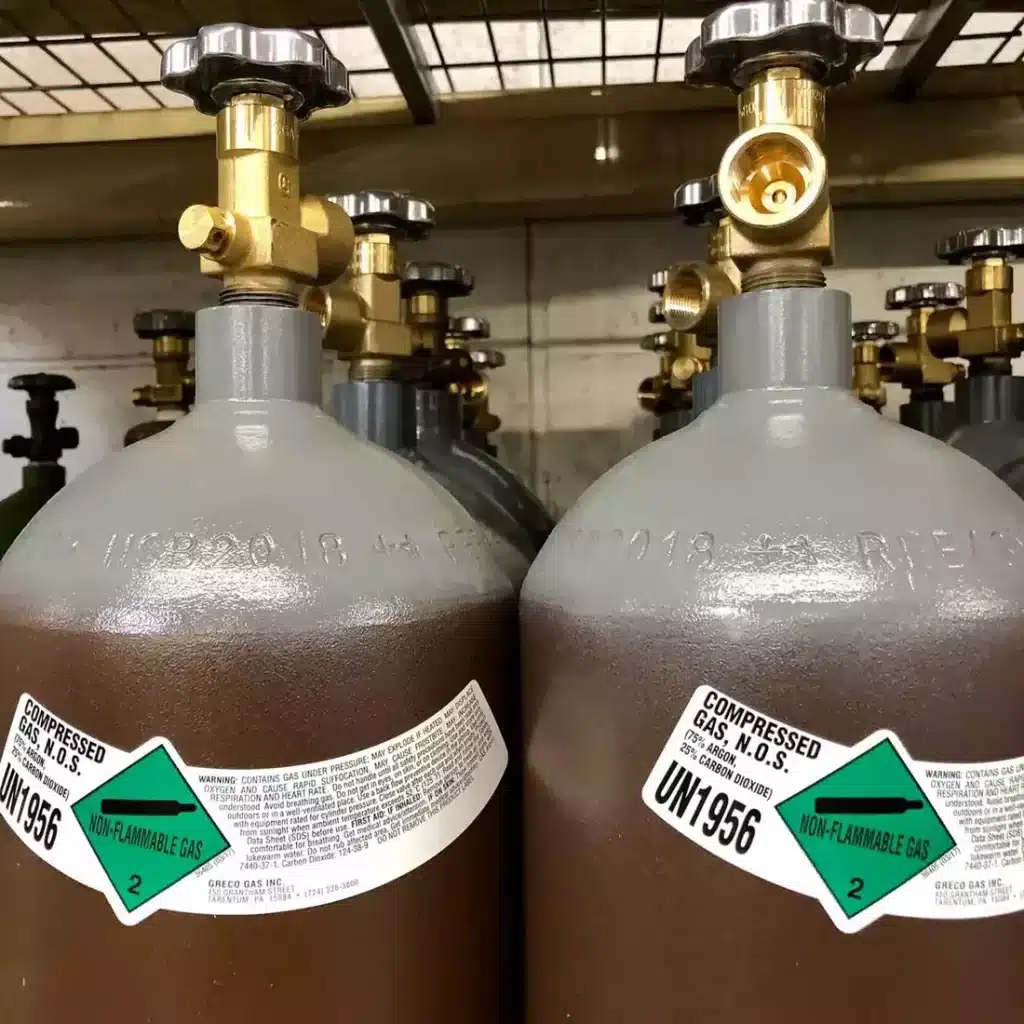
However, there may be some situations where MIG welding with 100% argon gas is suitable for welding steel or other ferrous metals, such as when welding thinner materials that require a shallow weld with low penetration. Additionally, pure argon gas may be suitable for welding stainless steel, as it can help to reduce the risk of oxidation and improve the overall quality of the weld.
What About 100% Argon In TIG Welding?
TIG welding with 100% argon gas is a common and widely used shielding gas choice for a variety of metals, including steel, stainless steel, aluminum, and copper alloys. Argon is primary choice in TIG because of the sole nature of the tungsten electrode. Tungsten can easily get contaminated by the presence of semi-reactive or reactive gases such as CO2, O2 or N2, so the arc becomes highly unstable and you need to grind the tungsten and start all over.
Similarly to MIG, pure argon gas in TIG welding provides excellent coverage and stability of the arc, resulting in high-quality welds with low spatter and minimal contamination. It provides excellent coverage and stability of the arc, resulting in high-quality welds with low spatter and minimal contamination.
Advantages and Drawbacks of MIG Welding With Pure Argon
The main advantages of using pure argon gas for MIG welding include:
- Reduced spatter: Pure argon gas produces a stable arc that reduces the amount of spatter produced during welding, resulting in cleaner and more precise welds.
- Reduced oxidation: Argon gas helps to protect the weld from the surrounding air, reducing the risk of oxidation and contamination.
- Better arc control: The stable arc provided by argon gas allows for better control over the welding process, resulting in higher-quality welds.
- Suitable for thin materials: Pure argon gas is well-suited for welding thin materials, as it provides a low-heat input and low penetration, resulting in a shallow weld
However, there are also some drawbacks to using pure argon gas for MIG welding, including:
- Poor penetration: Argon gas produces a low-penetration arc, which may not be suitable for welding thicker materials or producing strong welds.
- Limited application: Pure argon gas is typically only suitable for welding non-ferrous metals such as aluminum, copper, and magnesium. It is less suitable for welding ferrous metals such as steel.
- Higher cost: Pure argon gas is typically more expensive than gas mixtures, which may make it less cost-effective for some welding applications.
Conclusion
MIG welding with 100% argon shielding gas can be an effective choice for welding certain materials, particularly non-ferrous metals like aluminum, copper, and magnesium. The stable arc provided by pure argon gas results in reduced spatter, improved arc control, and reduced oxidation, leading to higher-quality welds.
However, MIG welding with pure argon gas may have drawbacks for your MIG welding project such as limited application to certain materials, poor penetration, and higher cost compared to gas mixtures. Therefore, it is important to consider the specific requirements of the welding project and consult with a welding professional to determine the most suitable shielding gas for the job.
Resources
- https://www.millerwelds.com/resources/article-library/what-gas-should-you-use-for-mig-welding-in-diy-applications
- https://unimig.com.au/pure-argon-vs-argon-mixture-gas-which-gas-to-use-when-welding/
- https://blog.thepipingmart.com/metals/can-you-mig-mild-weld-steel-with-pure-argon/
- https://forum.millerwelds.com/forum/welding-discussions/19156-pure-argon-and-mig-with-steel
- https://www.alleima.com/en/technical-center/shielding-the-weld/





